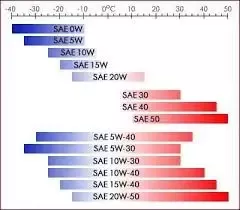In the world of automotive diagnostics, the question of whether a crank sensor can cause no spark is a common one. Understanding the role of the crank sensor and its impact on the ignition system is crucial for diagnosing and resolving no spark issues in vehicles.
The Function of the Crank Sensor
The crank sensor, also known as the crankshaft position sensor, plays a critical role in the operation of a vehicle’s engine. It is responsible for monitoring the position and rotational speed of the crankshaft, providing essential data to the engine control unit (ECU). This information is used to determine the precise timing for fuel injection and spark ignition.
Link Between Crank Sensor and Spark
When the crank sensor malfunctions or fails, it can disrupt the timing of fuel injection and spark ignition. This disruption can lead to a condition where the engine fails to produce a spark, resulting in a no-start or crank-no-start situation.
Symptoms of a Bad Crank Sensor
A faulty crank sensor can manifest in various symptoms, including:
- Trouble starting the engine
- Intermittent stalling
- Check Engine Light illumination
- Poor acceleration
- Fuel efficiency concerns
Diagnostic Procedures
When facing a no spark condition, diagnosing the crank sensor is essential. Diagnostic procedures may include:
- Using a scan tool to retrieve fault codes from the ECU
- Checking the crank sensor for proper voltage and signal output
- Inspecting the wiring and connections related to the crank sensor
- Performing a visual inspection for physical damage or contamination
Expert Insights
Automotive experts emphasize the significance of the crank sensor in the ignition system. They highlight its potential to cause no spark issues and stress the importance of thorough diagnostic procedures to identify and address crank sensor-related problems.

Credit: www.aa1car.com
Real-World Scenarios
Real-world scenarios and case studies further illustrate the impact of a faulty crank sensor on spark production. Videos and tutorials on platforms like YouTube demonstrate the diagnosis and resolution of no spark issues attributed to crank sensor failures.
Read More: What Sensor Controls Spark?

Credit: www.youtube.com
Frequently Asked Questions
Does Crankshaft Position Sensor Affect Spark?
Yes, the crankshaft position sensor affects spark. It is a crucial component of the engine that provides information to the motor, impacting fuel injection and spark timing. If the sensor fails, it can cause performance issues or lead to being stranded.
Without the sensor, the engine will have trouble firing spark plugs or injecting fuel, resulting in difficulty starting the vehicle.
What Sensors Can Cause No Spark?
A failed crankshaft positioning sensor can cause no spark in your engine. This sensor is crucial in determining the top dead center (TDC) of each cylinder, which affects fuel injection and spark timing. Without a functioning crankshaft position sensor, your engine may experience performance issues or fail to start altogether.
Will A Crank Sensor Cause A No Start?
Yes, a faulty crank sensor can cause a no start condition. The crankshaft position sensor is an important component of the engine, providing information for fuel injection and spark timing. When the sensor fails, it can lead to performance issues or even leave you stranded.
Symptoms of a bad crankshaft sensor include trouble starting the engine, intermittent stalling, check engine light on, poor acceleration, and fuel efficiency concerns.
What Symptoms Does A Bad Crank Sensor Cause?
A bad crank sensor can cause trouble starting the engine, intermittent stalling, check engine light, poor acceleration, and fuel efficiency concerns.
Conclusion
In conclusion, the crank sensor can indeed cause no spark in a vehicle. Understanding its function, recognizing the associated symptoms, and performing thorough diagnostic procedures are essential for effectively addressing no spark issues related to the crank sensor.


